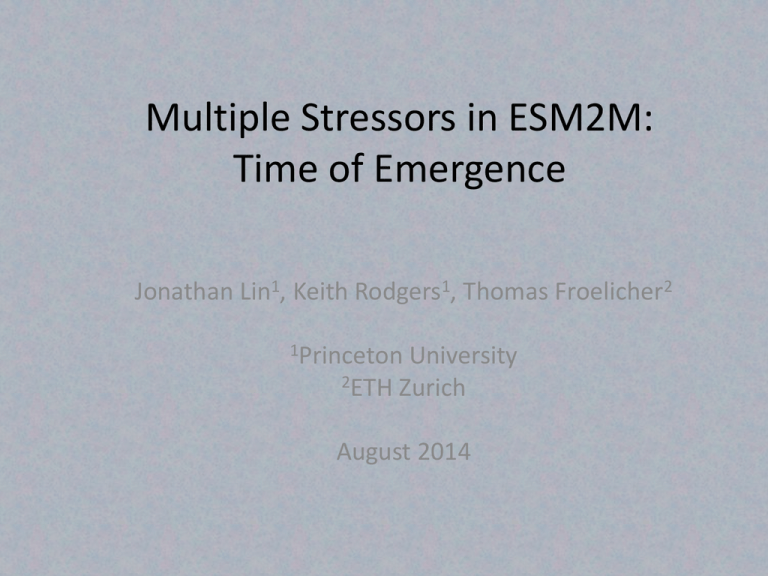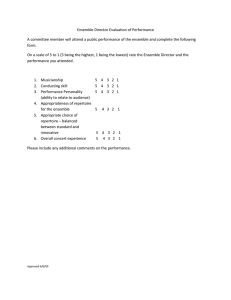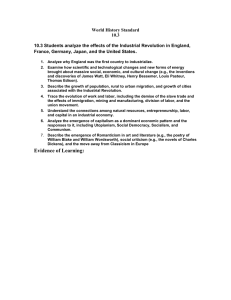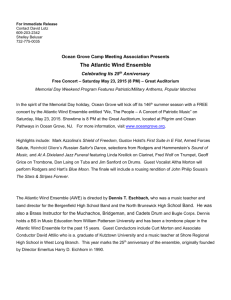Multiple Stressors in ESM2M: Time of Emergence Jonathan Lin , Keith Rodgers
advertisement

Multiple Stressors in ESM2M: Time of Emergence Jonathan Lin1, Keith Rodgers1, Thomas Froelicher2 1Princeton University 2ETH Zurich August 2014 Organizations and Host • Princeton Environmental Institute – “The Internship Program offers Princeton undergraduates a unique opportunity to complement their academic interests with handson, engaging, independent research and project experiences through the summer months.” • Atmospheric and Ocean Sciences (AOS) Program Background Information • What is the ESM2M? – – – – Models physical climate (land, atmosphere, ocean and sea ice) Incorporates interactive biogeochemistry (e.g. carbon cycle) Internal variability (ENSO and other climatic modes) Fully coupled model • 30 member ensemble (1950 – 2100) – Each ensemble member initialized with slightly different atmospheric state (i.e. January 1, January 2, etc.) – Each ensemble member is just one realization of all the possible paths of progression – Does NOT represent all possibilities, but rather just a range Guiding Question • What are the time scales of detectable trends in four major stressors that control ocean ocean ecosystem and marine organisms? – Omega Aragonite (saturation state) • Ωarag = [Ca2+] [CO32-] / K’sp – Sea Surface Temperature – Oxygen (integral over 100m – 600m depth) – Primary Productivity Time of Emergence: Method • Signal to Noise Ratios – Averaged linear trend (signal) divided by the standard deviation (noise) among the 30 ensemble members – Used a 30 year moving window for linear trends to create signal to noise ratio over time (1965 – 2085) • Mechanism – Time of emergence when the signal to noise ratio finally crosses a threshold – Define the threshold as a signal to noise ratio of 2 (95% confidence of a detectable trend, a rather conservative value) Confidence Intervals % confidence of Trend from 2005 – 2014. From top left, Ωarag, SST, Oxygen Inventories, and Primary Productivity. Confidence Intervals • We can also look at the combined effect of the stressors. • Average of the % confidence of all four major stressors, averaged from 2005-2014 (top), and 20752084 (top). Time of Emergence Time of Emergence (95% confidence). From top left, Ωarag, SST, Oxygen Inventories, and Primary Productivity. Acknowledgments • PEI for allowing me the opportunity to participate in this internship • Keith Rodgers, Thomas Froelicher, and Brendan Carter for their initiation of this project as well as their valuable mentorship and involvement in my work







